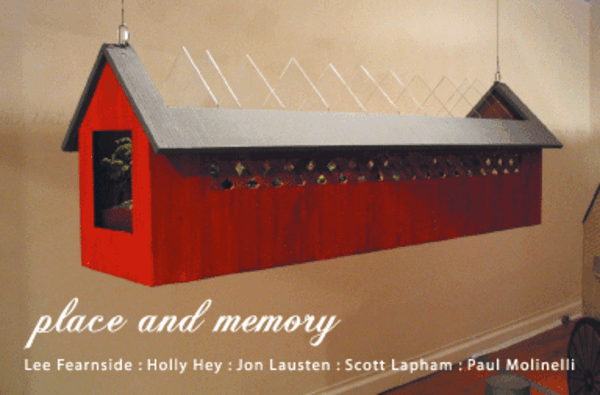Place and Memory
Friday, October 6, 2006 to Saturday, November 25, 2006

Lee Fearnside
Holly Hey
Jon Lausten
Scott Lapham
Paul Molinelli
Together these artists explore the connections between place and memory, and the ways that environments are transformed into storied places. Memories of places become a language through which we recall our past social experiences, and our sense of place and history are inextricably entwined. These artists’ work suggests ideas about the ways that places and memories, both personal and collective, intersect and inform each other.
Lee Fearnside photographs houses under construction, and she treats the physical space as a psychological environment. Lee’s photographs of “homes” are filled with blemishes and emptiness, showing the electrical boxes, the sub-floors and the skeletal framing as they both reveal and block the view of the space to come.
Scott Lapham photographs former industrial mill buildings in Rhode Island in various conditions of decay, exploring the state’s working-class history. The images show tumbling brick walls, and rotted wood, the last remaining vestiges of the buildings’ former glory. The mill buildings used to be the life-blood of an industrial economy, but now are either abandoned or being developed into high-priced condos. His photographs are infused with a bitter nostalgia, showing the fading collective memory of places as they are gentrified.
Paul Molinelli creates sculptural work loosely based on pre-cinematic forms of popular entertainment, like the peepshow and diorama. His pieces invite the viewer to spy upon his minutely detailed rural subjects. His sculptures ask us how rural life is idealized by the dominant suburban and urban culture.
Holly Hey introduces the landscape into the exhibition by combining painting, video and natural elements. The viewers must surround themselves with bound twigs and branches to see the work. Her installation brings together the present and past by engaging the senses and the landscape of her childhood home.
Jon Laustsen builds small-scale architectural environments based on actual construction techniques and materials. He designs the work organically as it is built, creating emerging construction sites that grow into little worlds of their own.